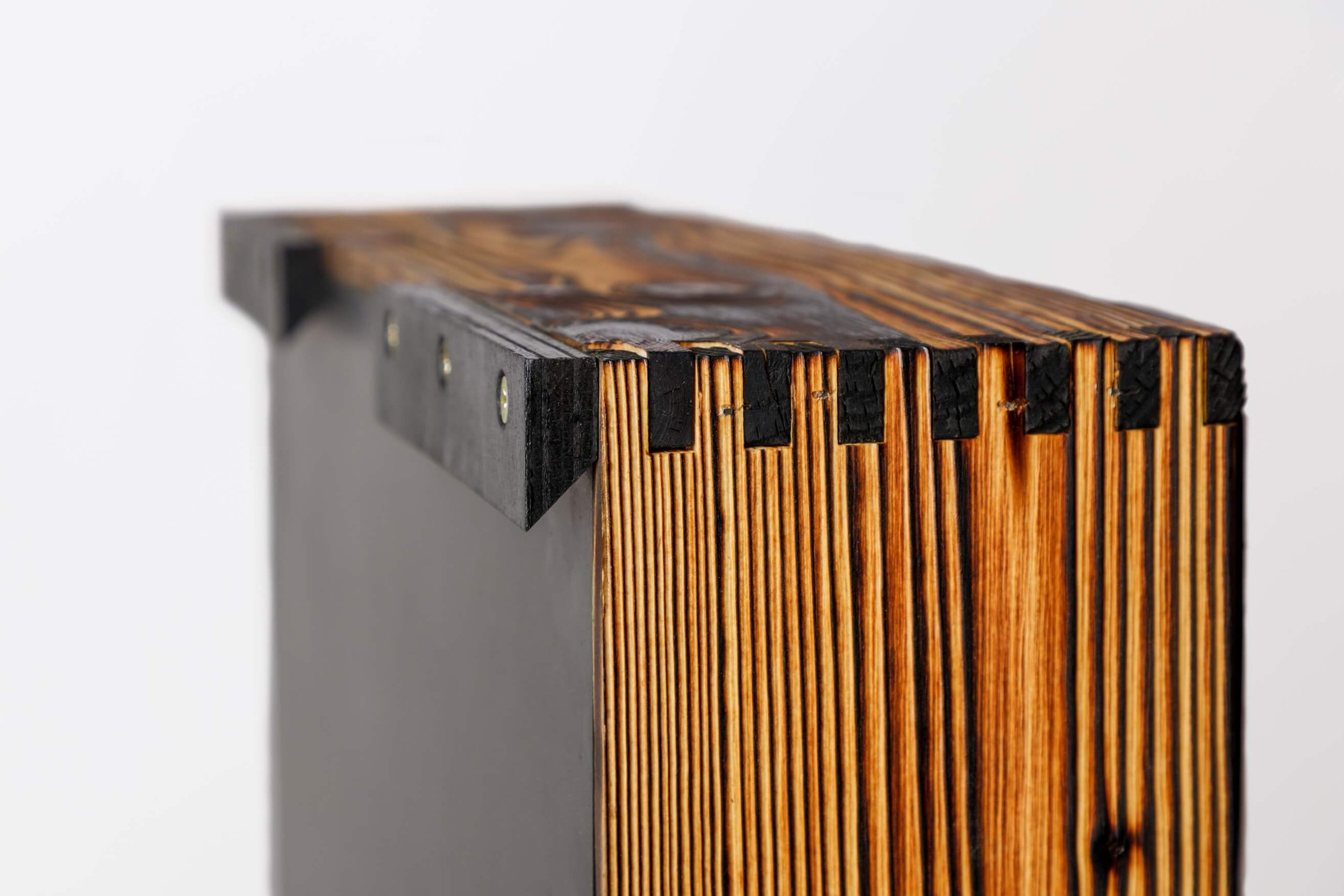Acoustic resonators
A resonator is like an absorber that works only on a narrow frequency spectrum. It’s a very useful device when you need to absorb a certain low frequency caused by room modes (certain frequencies caused by the geometry of the room).
For example, if you have acoustic treatment in the room placed already, but you can see and hear that one frequency is still causing problems, it can be absorbed by a resonator specifically tuned to resonate at this frequency.
Woody Resonator in black color
Design
The resonator looks like a box with holes. It’s called a Helmholtz resonator and thanks to the spacing between the openings it can be tuned to resonate at a specific effectivness. The air passing through the holes is resonating at the desired frequency and then gets effectively absorbed in the material inside the cavity.
Tuning the whole system counts on a few aspects:
the volume of the air inside
size of the openings, spacing between the holes
the thickness of the front plate
how much absorption material is inside
Yes, there is recycled absorption material Envizol inside to make it as effective an absorber as possible. It’s not just an empty box.
Tuning the resonator to a specific frequency
For example, the resonator you see here is tuned to absorb 55-57 Hz.
If we were to tune it to:
a lower frequency - we would make the holes in a grid with wider spacing
a higher frequency - we would make the grid denser
Or we could change the diameter of the holes. That depends on the mathematical formula that is used for the calculation of the effectiveness. But you won’t need to calculate anything, that’s our job. You just tell us what frequency is problematic.
How many resonators to use?
A rule of thumb says that for the best effectiveness, the classic Helmholtz resonator should have a volume of 1 % of the room.
However, we equipped our Woody resonator with absorption material inside for extra effectiveness, so we would start with one or two pieces instead.
If the room mode is strong and you need to absorb more than a 5 dB peak, we would recommend using two Woody Resonators. Then you can check the effectiveness and place more if needed.
The resonator should be placed where the room mode is the strongest - to have the biggest impact. You can experiment with the placement, but you’ll probably find out that the best placement is as close to your listening position as possible. Woody Resonator can be simply hung on the wall, so it’s easy to relocate if needed.













